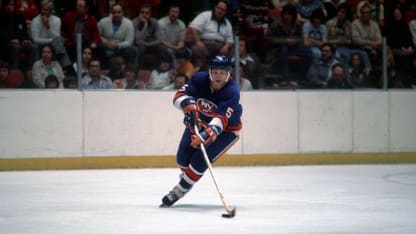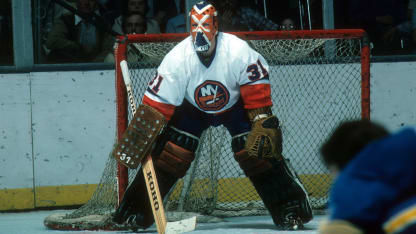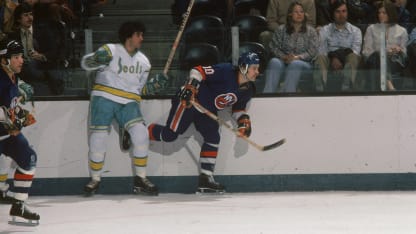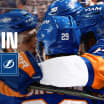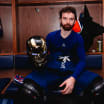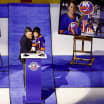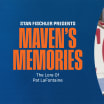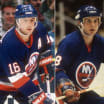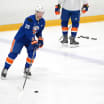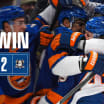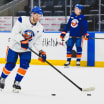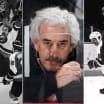The beat went on even with third-liners. Garry Howatt delivered a pre-Christmas present, with a three-goal hat trick in a 7-1 rout of the St. Louis Blues. On the checking side, Ed Westfall and Lorne Henning combined to form one of the league's top penalty-killing units.
Arbour's work was cut out for him but it mainly focused on producing the right line combinations beyond Trots, Gillies and Harris. Drouin, Henning and Andre St.Laurent comprised the centers with Bob Bourne champing at the bit on the Fort Worth farm.
Between the serious business of keeping pace with the Canadiens there always was time for levity. One of the lead humorists was Gillies who, after a practice, got the bright idea to slice Arbour's socks before the coach got to his locker.
Escaping in time, Jethro climbed into the physical therapy whirlpool from where he had a clear view of Radar's locker. Soon enough, the coach arrived, pulled on his socks -- and they went straight over his feet. After a suitable scream of disgust, Al sought the culprit.
Gillies: "He looked over at me in the whirlpool and said, 'I know you did it.' Of course, I denied it. But he picked up all my clothes and dumped them in the pool. 'That'll teach you,' he said."
Still perplexed, Clark insisted that Al reveal how he knew it was him, Jethro. "He told me something I never forgot: 'You can't fool me; I know everything.' And he did."
The coach certainly knew how to develop -- and maintain -- chemistry. Exhibit A was the manner in which he blended the diverse personalities of his goaltenders. High-strung and filled with superstitions, Bill Smith would not even allow teammates to talk to him on game day.
By contrast, the laid-back but voluble Glenn Resch would talk to any one at any time; but careful to stay away from Battlin' Billy on game day."We're both Number One," Chico noted. "Al made it clear that the fairest play would be for us to split things; and we did."
Their respective records underline the point: Resch: 23-11-8; 2.07. Smith: 19-10-9; 2.61. In another year, Chico would have been a favorite for the Calder Trophy as rookie of the year. Since, Trottier finished the campaign as the highest-scoring rookie in history, Bryan annexed the Calder.
As for the question posed back in September -- Can They Do It Again? -- it was answered by arithmetic.
Their 42-21-17 record was second only to the Stanley Cup Champion Flyers in the Patrick Division. While accenting defense, the Nassaumen still managed to produce four 30-goal scorers; Gillies, 34, Trottier, 32, Harris, 32 and Potvin, 31.
As Newsday's chronicler, Tim Moriarty, concluded, "In their forth season, the Islanders were still doing things in an incredible fashion!"
The playoffs were ahead; which meant yet another test of this amazing club's incredibility!

